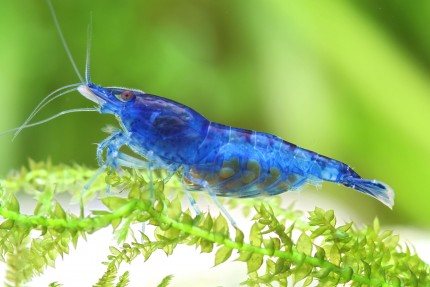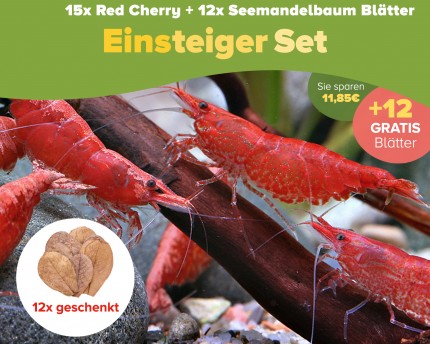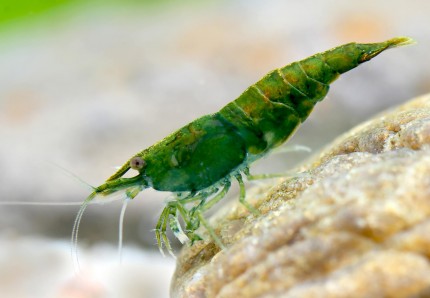- Item no: 5141
Fast delivery times
All products are in stock with us!14 years of breeding experience
Let our team of experts advise you!High customer satisfaction
from over 3,000 reviews "The blue form of Cambarellus shufeldtii is also called the blue Louisiana dwarf crayfish. It is also known as the blue Shufeldt's dwarf crayfish. This color form also comes from the US southern states of Louisiana, Alabama, Mississippi, Arkansas, Missouri Kentucky and Texas. In the wild, the blue Louisiana dwarf crayfish lives primarily in stagnant waters and also in slow flowing waters.
This color form of Cambarellus shufeldtii is grayish-light blue to relatively bright blue. Up to now it is not completely clear, what this coloration is due to. It is possible that the animals change their color back to brownish after a moult, but it is also possible that they become more intense blue. Up to now it is not known if and how this coloration is inherited. Female blue Cambarellus shufeldtii grow up to 4 cm long (measured without claws), the males remain somewhat smaller, but have comparatively more massive claws. Males and females of Cambarellus shufeldtii can be easily distinguished by the V-shaped mating styli, which in males are formed by the first two pairs of webbed legs. In contrast, the females of the blue Louisiana dwarf crayfish have 5 pairs of webbed legs and no mating styli.
The blue form of Cambarellus shufeldtii are also quite peaceful little crayfish. They can be kept well in a small group, for example two females, one male. There is also little problem with small peaceful fish that live mainly in the middle and upper areas of the aquarium. With other crayfish, crabs, and large-armed shrimp, deadly confrontations can occur, and fan shrimp are nipped. If one accepts that the odd slow or careless shrimp will be eaten, dwarf shrimp with similar needs in terms of husbandry are good company. Snails are part of the natural food spectrum of the blue Louisiana dwarf crayfish, they are eaten very readily. Cambarellus shufeldtii, being a North American crayfish, is potentially a carrier of the crayfish plague pathogen. Please never allow the crayfish themselves or any crayfish aquarium water containing Cambarellus shufeldtii to enter the wild or aquariums containing crayfish from other continents to protect our native crayfish populations as well as other aquarium crayfish from this disease that is deadly to them.
The blue form of the Louisiana dwarf crayfish is also well suited for beginners to crayfish keeping. The Cambarellus shufeldtii copes with temperatures from 10 to 30°C. It feels most comfortable at room temperature. Heater and cooling are usually not necessary. If the pH-value is between 7 and 8, the total hardness (GH) between 6 and 20 °dH, the KH between 3 and 20 °dH everything is as it should be. The Louisiana Dwarf Crayfish can usually be kept very well in tap water.
An aquarium for the blue Louisiana Dwarf Crayfish should have enough hiding places , which are especially important for freshly skinned animals and pregnant females. A small group of one male and two females can be kept from 30 l. Base area, hiding places(perforated bricks, crab tubes, caves, coconut halves ...) and climbing possibilities are much more important than swimming space, this should already be considered when setting up the aquarium. Always cover the aquarium tightly, crayfish are escape artists! If you want to breed specifically, we recommend a 54 l aquarium. Since the blue Louisiana Dwarf Crayfish does not eat living plants and also does not "garden", it is a good stock for planted aquariums.
Blue Louisiana Dwarf Crayfish especially like to eat brown autumn leaves from native deciduous trees, green food(nettle, spinach, dandelion, scalded or dried), special crayfish food or flake food, but also protein food for shrimps, frozen food and also e.g. live enchytraea or similar. Also vegetables(peas, pumpkin, ...) are gladly taken.
The blue Louisiana dwarf crayfish is not difficult to breed. The color form is not easy to fix. However, it is worth a try. When mating, the male turns his mate on her side or back and clutches his claws. After the act, the female pins about 10-30 eggs under his abdomen, where she cleans and cares for them. After about 4 weeks, the small dwarf crayfish hatch from these eggs. They stay with the mother for a few more days and then go on their own.
Our food recommendation: Freshwater crayfish have a very varied diet in the wild. The Natureholic Crayfish Feed Sticks contain in a biologically balanced form only those ingredients that these crayfish in this or similar form to their natural food spectrum. This naturally supports and promotes moulting, growth and reproduction. Due to their protein content they are ideally suited for omnivorous crayfish of the genera Procambarus, Cambarus, Cambarellus, Astacus and the Cherax crayfish from Australia, which are basically omnivores that like to eat animal as well as vegetable food. The crayfish of the genus Cherax from Papua also like to eat a portion of animal food when they are young, but later they switch mainly to plant food.
Our plant recommendation: Use the following for planting NatureHolic InVitros. These are free of snails, planarians and other unwanted co-inhabitants. Also free of algae spores, bacteria and fungi.
Expert Tip: We recommend for fish keeping the NatureHolic 3 Phase Liquid. The care set offers the best all-round protection for your animals. It ensures optimal conditions for successful breeding and keeping.
| Scientific name: | Cambarellus shufeltii Faxon, 1884 |
| German name: | louisiana blue dwarf crayfish, blue shuffle, blue shuffeldt's dwarf crayfish |
| Difficulty level: | suitable for beginners |
| Origin/Distribution: | Southern USA: Alabama, Texas, Kentucky, Mississippi, Missouri, Louisiana, Arkansas |
| Coloration: | grayish blue to light blue, with dot pattern or stripe pattern |
| Age expectancy: | 1.5 to 2 years |
| Water parameters: | GH 6 to 20, KH up to 20, pH 7 to 8, temperature 10 to 30 °C |
| Tank size: | from 30 l for a pair or a small group of 2 females and 1 male, well structured |
| Food: | Natureholic crayfish food, brown autumn leaves, nettles, flake food, granulated food or food tabs, vegetables, frozen food |
| Reproduction: | easy, after four to six weeks 10 to 30 young crayfish hatch, they are cannibalistic and therefore need many hiding places |
| Behavior: | relatively peaceful, not strongly territorial |
| Socialization: | with shrimp and mini fish, also with snails (may be eaten) |
| Further information | Sex differences crayfish, shrimp, crayfish, snails & mussels proper feeding, Cherax aquarium crayfish - keeping in the aquarium |
- Item no: 5141
- EAN No.: 7427061467802
Entdecke die Garnelio Welt!
Garnelio gehört zu den größten Onlineshops für wirbellose Aquarientiere weltweit.
Viele Artikel gibt es exklusiv nur bei uns im Shop.











































